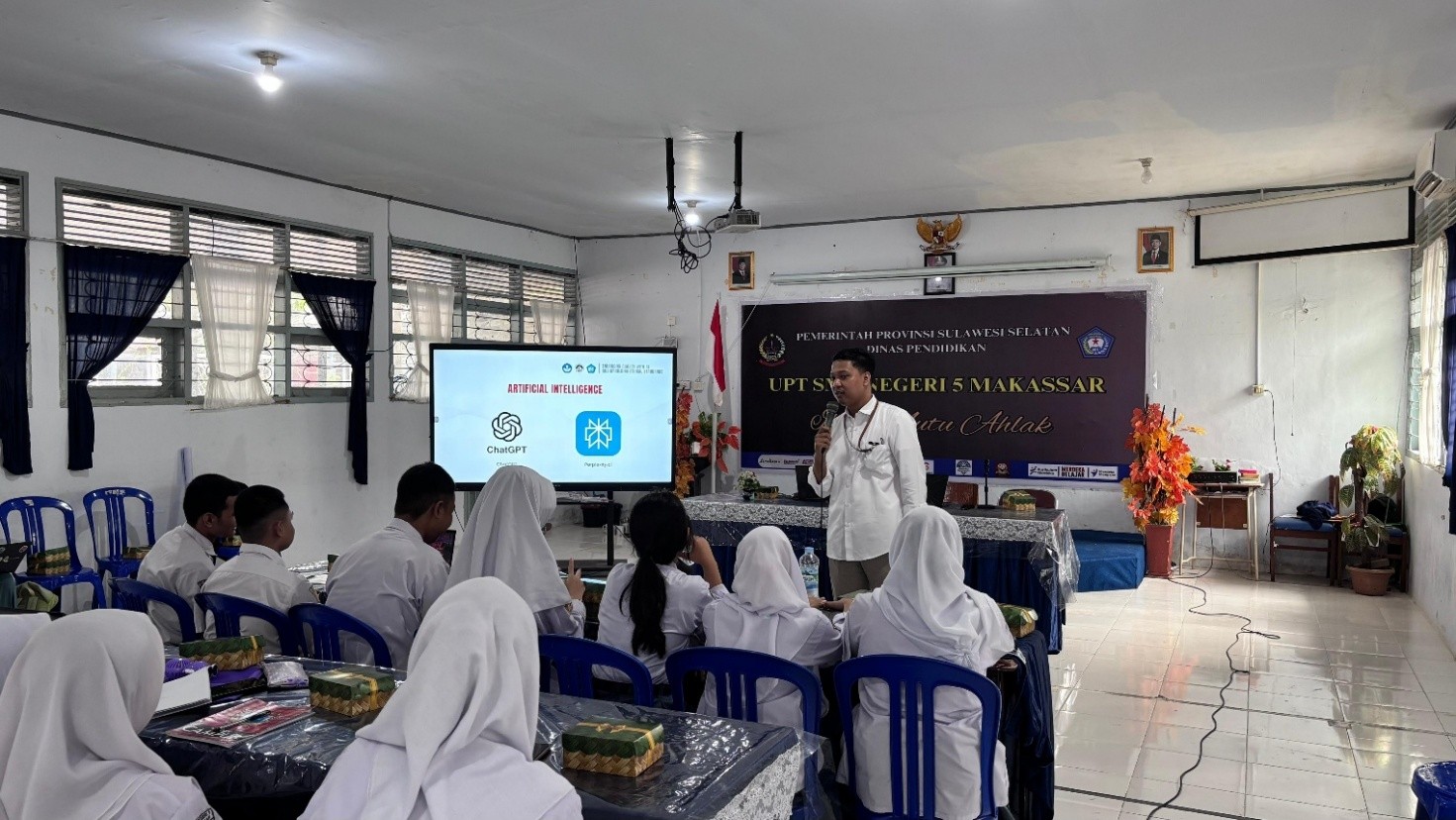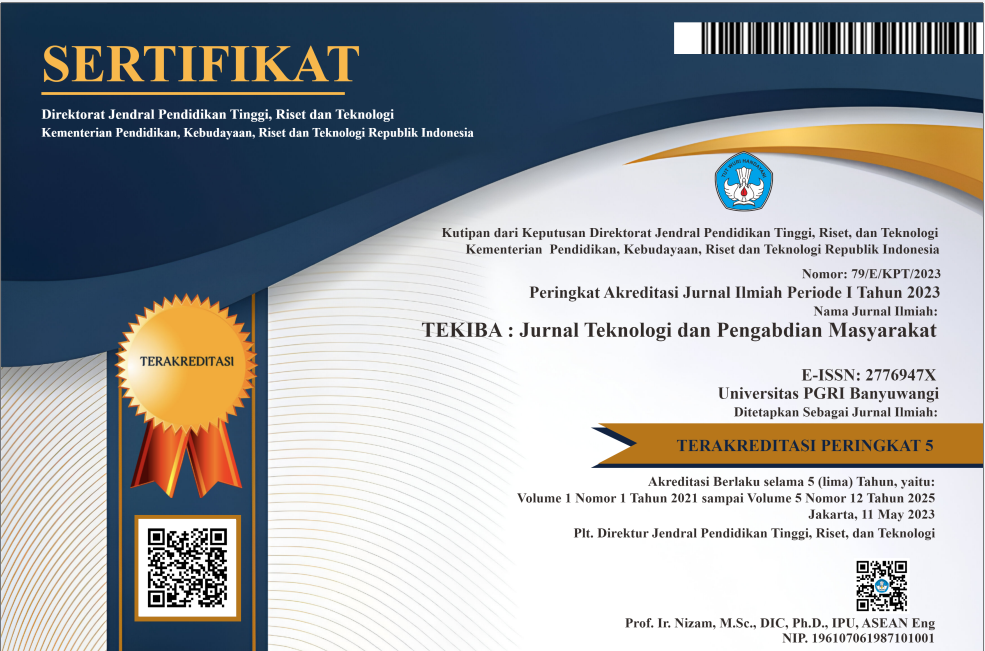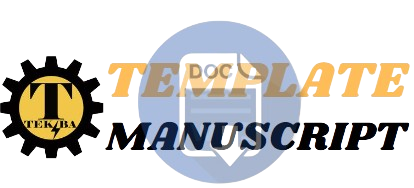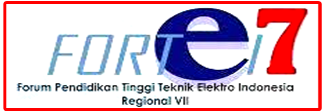Workshop Penulisan Ilmiah Menggunakan Teknologi AI Dan Ethical Standart Bagi Siswa SMAN 5 Makassar
DOI:
https://doi.org/10.36526/tekiba.v5i3.5341Keywords:
Workshop, Scientific Writing, High School Student, Artificial Intelligence, EthicAbstract
Scientific writing is a crucial skill for high school students to support critical thinking and academic literacy. To address this, a workshop was conducted at SMA Negeri 5 Makassar to enhance students’ scientific writing skills and introduce ethical AI usage. The activity was planned to begin with identifying the problems and needs of the partner school, followed by preparing workshop materials, conducting the workshop, and concluding with evaluation and follow-up actions. The program included interactive lectures, demonstrations of AI tools, and guided writing exercises focused on crafting titles, backgrounds, and literature reviews. Pre- and post-tests revealed significant improvement. Understanding of title writing increased from 40% to 87%, background structure from 30% to 80%, and literature review structure from 17% to 67%. Knowledge of AI tools rose from 70% to 100%, while comprehension of prompting techniques and AI’s role in writing both reached 100% after the workshop. Notably, awareness of ethical AI usage, initially absent among participants, reached 100%. Understanding of transparency in AI-assisted writing also increased dramatically from 3% to 100%. Overall, the workshop effectively improved both technical and ethical aspects of scientific writing, preparing students to face academic challenges with greater confidence and responsibility.
References
[1] A. Rohman, “Literasi dalam Meningkatkan Kemampuan Berpikir Kritis di Era Disrupsi,” EUNOIA (Jurnal Pendidik. Bhs. Indones., vol. 2, no. 1, pp. 40–47, 2022, doi: http://dx.doi.org/10.30821/eunoia.v2i1.1318
[2] L. Wahyunita, E. F. Primadhany, N. M. Angelia, and D. Pramuditya, “Upaya Peningkatan Pemahaman Karya Ilmiah Berbasis Teknologi Informasi Bagi Guru Dan Siswa Madrasah Aliyah,” Minda Baharu, vol. 7, no. 2, pp. 252–265, 2023, doi: http://dx.doi.org/10.33373/jmb.v7i2.5788
[3] I. W. Gunada, G. H. Fatina, L. G. Istiqlal, M. Y. Nyiaga, and Y. Hardiyanti, “Pelatihan Penulisan Karya Tulis Ilmiah Dengan Metode Tutorial Terbimbing Di SMA Negeri 1 Narmada Lombok Barat,” J. Pengabdi. Masy. Sains Indones., vol. 5, no. 1, pp. 24–28, 2023, doi: http://dx.doi.org/10.29303/jpmsi.v5i1.225
[4] R. Sakina, A. W. Widyaningsih, and P. Hardiani, “Pelatihan Penulisan Karya Ilmiah Kepada Siswa Kelas Xii Sma Binar Ilmu Bandung,” Ejoin J. Pengabdi. Masy., vol. 1, no. 12, pp. 1540–1545, 2023, doi: http://dx.doi.org/10.55681/ejoin.v1i12.2042
[5] OECD, “PISA 2015 Results (Volume I): Excellence and Equity in Education,” OECD Publishing, Paris, 2016. [Online]. Available: http://dx.doi.org/10.1787/9789264266490-en
[6] OECD, “PISA 2022 Results Indonesia,” 2022. [Online]. Available: https://www.oecd.org/publication/pisa-2022-results/country-notes/malaysia-1dbe2061/
[7] Menteri Pendidikan dan Kebudayaan Republik Indonesia, “Peraturan Menteri Pendidikan dan Kebudayaan Republik Indonesia Nomor 22 Tahun 2016 tentang Standar Proses Pendidikan Dasar dan Menengah,” 2016. https://peraturan.bpk.go.id/Details/224242/permendikbud-no-22-tahun-2016
[8] H. Firman, “Yuk, Cek Jalur Prestasi SNBP Anda,” 2024. https://indonesia.go.id/kategori/pendidikan/7932/yuk-cek-jalur-prestasi-snbp-anda?lang=1&utm_source=chatgpt.com
[9] F. Ayu, D. Anggriani, and N. Nizamuddin, “Meningkatkan Kemampuan Menulis Karya Ilmiah Melalui ‘Process Approach’ pada Siswa/i SMA Panca Budi,” ENGGANG J. Pendidikan, Bahasa, Sastra, Seni, dan Budaya, vol. 3, no. 2, pp. 21–33, 2023. https://e-journal.upr.ac.id/index.php/enggang/article/view/8797
[10] B. T. S. Sinambela and W. Hadi, “Pengaruh Model Pembelajaran Berbasis Proyek Terhadap Kemampuan Menulis Karya Ilmiah Pada Siswa Kelas XI SMA Negeri 19 Medan Tahun Pembelajaran2015/2016,” Asas J. Sastra, vol. 5, no. 2, p. 56832, 2015. doi: https://doi.org/10.24114/ajs.v5i2.3908
[11] Pontjowulan, “Optimalisasi Model Pembelajaran Berbasis Proyek (Project Based Learning) untuk Meningkatkan Keterampilan Menulis Karya Ilmiah,” J. Syntax Transform., vol. 4, no. 4, pp. 11–23, 2023, doi: http://dx.doi.org/10.46799/jst.v4i4.712
[12] Pasmiati, “Peningkatan Keterampilan Menulis Karya Tulis Ilmiah Melalui Model Pembelajaran Berbasis Masalah Berbantuan Lembar Kerja Siswa Pada Siswa Kelas XI SMA Negeri 1 Ungaran,” Universitas Negeri Semarang, 2011. [Online]. Available: https://lib.unnes.ac.id/8038/1/10551.pdf
[13] L. Devitasari, S. Telaumbanua, and S. Sari, “Kesulitan Siswa SMA Dalam Menyusun Artikel Ilmiah,” J. Educ. FKIP UNMA, vol. 9, no. 4, pp. 2140–2148, 2023, doi: https://doi.org/10.31949/educatio.v9i4.5946
[14] R. Audina, “Analisis Kesulitan Siswa dalam Penyelesaian Karya Ilmiah di SMA HAS Sepakat,” Lit. J. Bhs. Dan Sastra, vol. 5, no. 1, pp. 105–116, 2023, doi: https://doi.org/10.47766/literatur.v5i1.1779
[15] R. D. Hartati and B. Pratiwi, “Analisis Kendala Eksternal Dalam Penulisan Karya Ilmiah Siswa Sekolah Menengah Atas,” DIALEKTIKA, vol. 11, no. 1, pp. 21–34, 2024, doi: https://doi.org/10.15408/dialektika.v11i1.36040
[16] F. R. Rahim, D. F. Kher, and Y. Harisman, “Professional Competence Enhancement of High School Teachers Through Scientific Paper Writing Training,” Lect. J. Pendidik., vol. 14, no. 2, pp. 432–443, 2023, doi: http://dx.doi.org/10.31849/lectura.v14i2.15176
[17] S. Pitrianti and R. Gasanti, “Analisis Kesulitan Menulis Karya Ilmiah Siswa SMA Terbuka,” Literasi J. Bhs. dan Sastra Indones. serta Pembelajarannya, vol. 4, no. 2, pp. 91–96, 2020. doi: http://dx.doi.org/10.25157/literasi.v4i2.4283
[18] A. Aryani, “Identifikasi Kesulitan Guru Dalam Menyusun Publikasi Ilmiah,” Pros. PITNAS Widyaiswara, vol. 1, pp. 507–516, 2024. https://ejournal.iwi.or.id/ojs/index.php/pitnas2024/article/view/312
[19] N. F. Hidayati, M. Waruwu, P. R. Utami, T. Utami, and A. Ramadhani, “Pelatihan Penyusunan Karya Tulis Ilmiah Berbasis AI Bagi Siswa MAN 1 Kota Pontianak,” ARSY J. Apl. Ris. Kpd. Masy., vol. 6, no. 1, pp. 110–117, 2025, doi: http://dx.doi.org/10.55583/arsy.v6i1.1116
[20] R. M. Afifa, R. Ginting, A. Afrisawat, F. Riandari, and H. R. Safitri, “Pemanfaatan Artificial Intelligence (AI) dalam Menyusun Karya Ilmiah bagi Siswa SMA Unggulan Al-Azhar Medan,” Lebah, vol. 18, no. 4, pp. 360–369, 2025. doi: https://doi.org/10.35335/lebah.v18i4.358
[21] S. Hanila and M. A. Alghaffaru, “Pelatihan penggunaan artificial intelligence (AI) terhadap perkembangan teknologi pada pembelajaran siswa SMA 10 Sukarami Kota Bengkulu,” J. Dehasen Mengabdi, vol. 2, no. 2, pp. 221–226, 2023. doi: https://doi.org/10.37676/jdm.v2i2.4890
[22] S. R. Pungus, D. E. Sondakh, A. T. Liem, S. I. Adam, J. Y. Y. Mambu, and M. T. Tombeng, “Meningkatkan Literasi AI dan Kesadaran Etika Digital melalui Edukasi Interaktif bagi Pelajar Sekolah Menengah Atas,” Servitium Smart J., vol. 3, no. 2, pp. 190–196, 2025. doi: https://doi.org/10.31154/servitium.v4i1.38
[23] S. S. Harahap, W. S. Simamora, R. R. Hadistio, and M. P. Siregar, “Pengenalan Teknologi AI Berkelanjutan melalui Pelatihan Partisipatif dan Pendekatan Interdisipliner untuk Mendorong Inovasi Pendidikan di Kalangan Pelajar,” J. PkM (Pengabdian Kpd. Masyarakat), vol. 7, no. 6, pp. 841–845, 2025. doi: http://dx.doi.org/10.30998/jurnalpkm.v7i6.26709
[24] K. B. Maphoto, K. Sevnarayan, N. E. Mohale, Z. Suliman, T. J. Ntsopi, and D. Mokoena, “Advancing students’ academic excellence in distance education: Exploring the potential of generative AI integration to improve academic writing skills,” Open Prax., vol. 16, no. 2, pp. 142–159, 2024, doi: https://search.informit.org/doi/10.3316/informit.T2024041000014190886861950.
[25] I. T. Sanusi and S. A. Olaleye, “An Insight into Cultural Competence and Ethics in K-12 Artificial Intelligence Education,” pp. 790–794, 2022, doi: http://dx.doi.org/10.1109/educon52537.2022.9766818
[26] H. Zhang, I. Lee, S. Ali, D. DiPaola, Y. Cheng, and C. Breazeal, “Integrating Ethics and Career Futures with Technical Learning to Promote AI Literacy for Middle School Students: An Exploratory Study,” Int. J. Artif. Intell. Educ., vol. 33, no. 2, pp. 290–324, 2022, doi: http://dx.doi.org/10.1007/s40593-022-00293-3
[27] S. Akgün and C. Greenhow, “Artificial Intelligence in Education: Addressing Ethical Challenges in K-12 Settings,” Ai Ethics, vol. 2, no. 3, pp. 431–440, 2021, doi: http://dx.doi.org/10.1007/s43681-021-00096-7
[28] N. Puspitaloka, D. N. Fauziah, and Y. Cahyana, “Workshop Pembuatan Media Pembelajaran Interaktif Pada Keterampilan Membaca Bahasa Inggris Bagi Guru-Guru SMP,” SELAPARANG J. Pengabdi. Masy. Berkemajuan, vol. 6, no. 4, pp. 1781–1786, 2022. doi: https://doi.org/10.31764/jpmb.v6i4.11586
[29] D. P. K. Dayu and N. D. Setyaningsih, “Pemberdayaan Guru Melalui Workshop Quizizz untuk Meningkatkan Keterampilan Digital pada Implementasi Kurikulum Merdeka,” J. Pengabdi. Masy. Bangsa, vol. 2, no. 10, pp. 4391–4396, 2024, doi: https://doi.org/10.59837/jpmba.v2i10.1741
[30] A. Zunaidi, “Metodologi Pengabdian Kepada Masyarakat Pendekatan Praktis untuk Memberdayakan Komunitas.” Yayasan Putra Adi Dharma, 2024. https://repository.iainkediri.ac.id/1030/
[31] N. Risa, R. Shintia, and U. Syaikhu, “Sociocultural Drivers of Local Educational Innovations: Findings from Indonesia,” 2020. doi: http://dx.doi.org/10.35489/BSG-RISE-WP_2020/043
[32] A. Rakhmawati and M. Mulyanto, “Penerapan Pendekatan Praktis-Aktif Dalam Pembelajaran Sastra,” Paedagogia, vol. 12, no. 2, pp. 98–108, 2009. DOI: https://doi.org/10.20961/paedagogia.v12i2.36020
[33] L. Saharat, “The Pedagogical Impact of ChatGPT on High-school Student’s Creative Writing Skills: An Exploration of Generative AI Assisted Writing Tools,” J. Natl. Educ. Test. Assess., vol. 5, no. 1, pp. 17–34, 2024, [Online]. Available: https://so02.tci-thaijo.org/index.php/JOURNALNIETS/article/view/267771/180578
[34] E. Elstad and H. Eriksen, “Harnessing AI in Secondary Education to Enhance Writing Competence,” arXiv Prepr. arXiv2412.12117, 2024. doi: http://dx.doi.org/10.48550/arXiv.2412.12117
[35] N. Patia, A. Maulidiyah, I. Bahijah, O. Wongso, P. D. Irene, and E. Rahmawati, “The Use of Perplexity AI in Academic Writing,” WAHANA Pedagog. J. Ilm. Pendidik. dan Pembelajaran, vol. 7, no. 1, pp. 32–35, 2025. DOI: https://doi.org/10.52166/wp.v7i1.9642
[36] S. Zack, “Why Every Student Needs Perplexity in Their Toolkit,” ArsTurn, 2025. https://www.arsturn.com/blog/why-every-student-needs-perplexity-in-their-toolkit?utm_source=chatgpt.com
[37] C. U. Lubis and B. I. R. Hz, “Perplexity AI on the Writing Efficiency of EFL Students’ in Higher Education: Students’ Insight,” ENGLISH Fr. Acad. J. English Lang. Educ., vol. 8, no. 1 May, pp. 167–178, 2024. DOI: https://doi.org/10.29240/ef.v8i1%20May.9982
[38] G. S. Pearson, “Artificial Intelligence and Publication Ethics,” Journal of the American Psychiatric Nurses Association, vol. 30, no. 3. SAGE Publications Sage CA: Los Angeles, CA, pp. 453–455, 2024. doi: http://dx.doi.org/10.1177/10783903241245423
[39] K. Anam, S. Rowiyah, B. H. Wicaksono, R. W. Setyaningrum, and R. Lestiono, “Chatgpt for Developing Critical Thinking in Writing: Perspectives of Senior High School English Teachers in Indonesia,” English Rev. J. English Educ., vol. 13, no. 2, pp. 457–468, 2025. doi: http://dx.doi.org/10.25134/erjee.v13i2.11828
[40] E. Hidayatullah, “Exploring Interactivity and Engagement: Improving Writing Skills with ChatGPT for Fun Learning,” J. Lang. Lit. Teach., vol. 5, no. 3, pp. 16–26, 2023, doi: http://dx.doi.org/10.35529/jllte.v5i3.16-26
[41] I. F. Damalie, P. Agbanu, P. Fiadzomor, and S. Akrong, “Evaluation, an Effective Tool for Performance Assessment of Workshops and Events towards Policy Direction in University Education in Ghana,” Open Access Libr. J., vol. 9, no. 10, pp. 1–11, 2022. doi: http://dx.doi.org/10.4236/oalib.1109277
[42] M. Costa, “Choosing the Right Assessment Method: Pre-Test/Post-Test Evaluation, Boston University, Cabrillo Colleges SLO websites 12/17/2013,” Revised, vol. 4, p. 23, 2014. https://studylib.net/doc/8246783/choosing-the-right-assessment-method--pre-test-post
[43] H. J. Martin, “Improving training impact through effective follow‐up: techniques and their application,” J. Manag. Dev., vol. 29, no. 6, pp. 520–534, 2010. doi: http://dx.doi.org/10.1108/02621711011046495
[44] S. Budiharto, S. F. Wardani, M. N. Imanulyaqin, F. S. Wahyuni, and D. Fitriana, “Pemanfaatan Artificial Intelligence Berbantu CHATGPT Dalam Penulisan Karya Ilmiah di MAN 1 Pontianak,” Digulis J. Pengabdi. Pada Masy., vol. 2, no. 4, pp. 17–24, 2024. doi: https://doi.org/10.26418/djpkm.v2i4.88943

Downloads
Published
Issue
Section
License
Copyright (c) 2025 Zulfadli Ibrahim, Ashabul Kahfi Susanto, Dewi Triantini, Muhammad Ihsan Zulfikar, Mentari S. Sitorus

This work is licensed under a Creative Commons Attribution-ShareAlike 4.0 International License.








